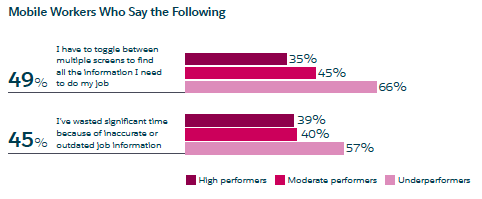Get your FREE 30-day trial.
Start by selecting a product:
Customer service hasn’t just changed — it has undergone a dramatic transformation. New research into the latest trends identify exactly what organisations need to know about what that transformation looks like and how to be ready for it.
Great products are powerful building blocks for any successful business. But these days, even the best products can’t satisfy customers on their own. The Fourth Industrial Revolution has redefined customers’ expectations to the point that 80% of them now consider their experience with a company to be as important as its products. The implications on the world of customer service are unprecedented.
Today, we’re releasing a new research report that shows just how trends in customer service are evolving in this hypercompetitive customer landscape. The new State of Service report provides in-depth analysis of a survey of more than 3500 customer service decision-makers and agents worldwide, signals a new reality for the role across every industry, and identifies practises that set leading organisations apart.
Here are the five customer service trends that stand out:
Leading service organisations invest in transformation.
Strategy is prioritised over time-to-resolution.
AI is empowering agents to take on their elevated roles.
Service teams are trailing customers on channel adoption.
Field service as a revenue centre and the face of a brand.
Let’s dive into these new trends one-by-one.
The marquee customer service trend is creating a sense of urgency among service leaders to overhaul their operations. Four out of five service decision makers believe that emerging technology is transforming customers’ expectations of them. Even more (82%) think their company’s customer service must transform to stay competitive.
This message is reaching the c-suite, which is increasingly eager to invest in modernised service. For decades, the business value of customer service budgets has been minimised due to outdated views. Fast forward to today, when customers make buying and advocacy decisions based on their experience with a brand – more than half (54%) of service organisations have year-over-year budget increases, and nearly two-thirds (63%) expect more money next year.
While the recognised need for service transformation is relatively consistent across organisations, high-performing teams – those with excellent customer satisfaction rates – are far more likely than their underperforming competition to be getting more resources.
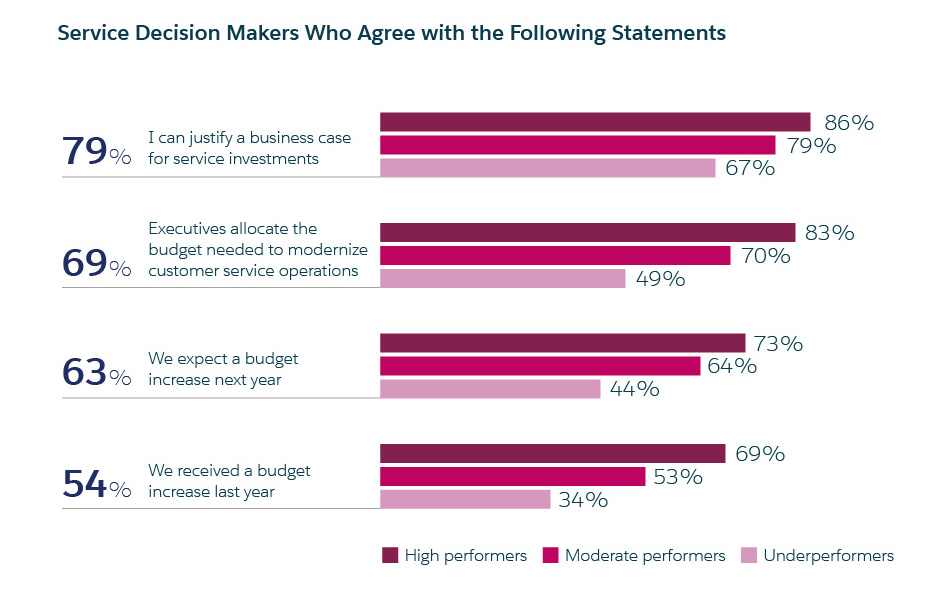
Customer expectations for tailored engagement based on their unique needs means that no customer-facing role – including agents – can operate with a ‘business as usual’ mindset. Today, it’s not sufficient for agents to focus on closing as many cases in as little time as possible. Instead, they tackle each customer interaction on a personalised basis and treat it in the unique manner the customer demands.
Agents are keenly aware of this new dynamic, with 71% viewing their jobs as more strategic than just two years ago. Service management is laser focused on helping agents gain the skills needed to provide this elevated service, with improved workforce skills topping out as their No.1 priority.
Yet just like when it comes to service investment and budgets, not all organisations are as advanced as others. Among high-performing teams, 63% of agents spend most of their time solving complex problems. On underperforming teams, however, a similar share of agents (57%) spend most of their time on mundane tasks. It’s no wonder that agents on high-performing teams are twice as likely to see a clear path for their career growth.
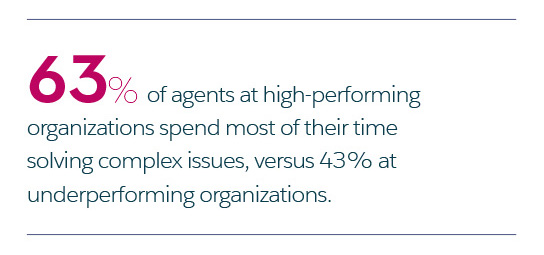
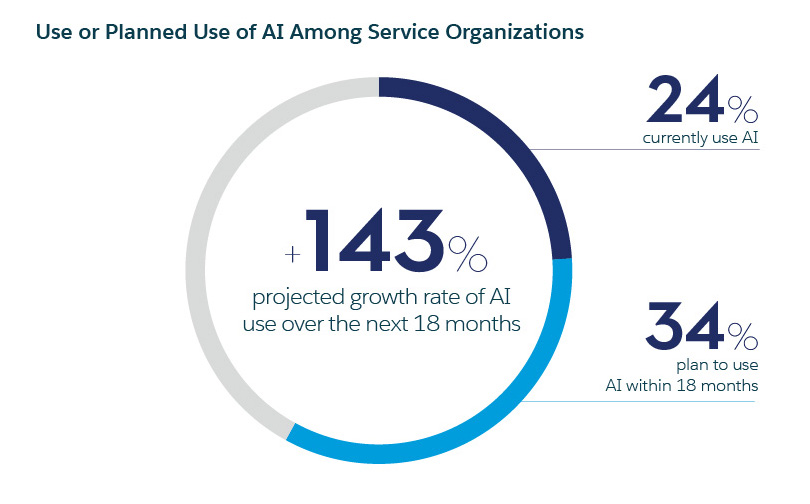
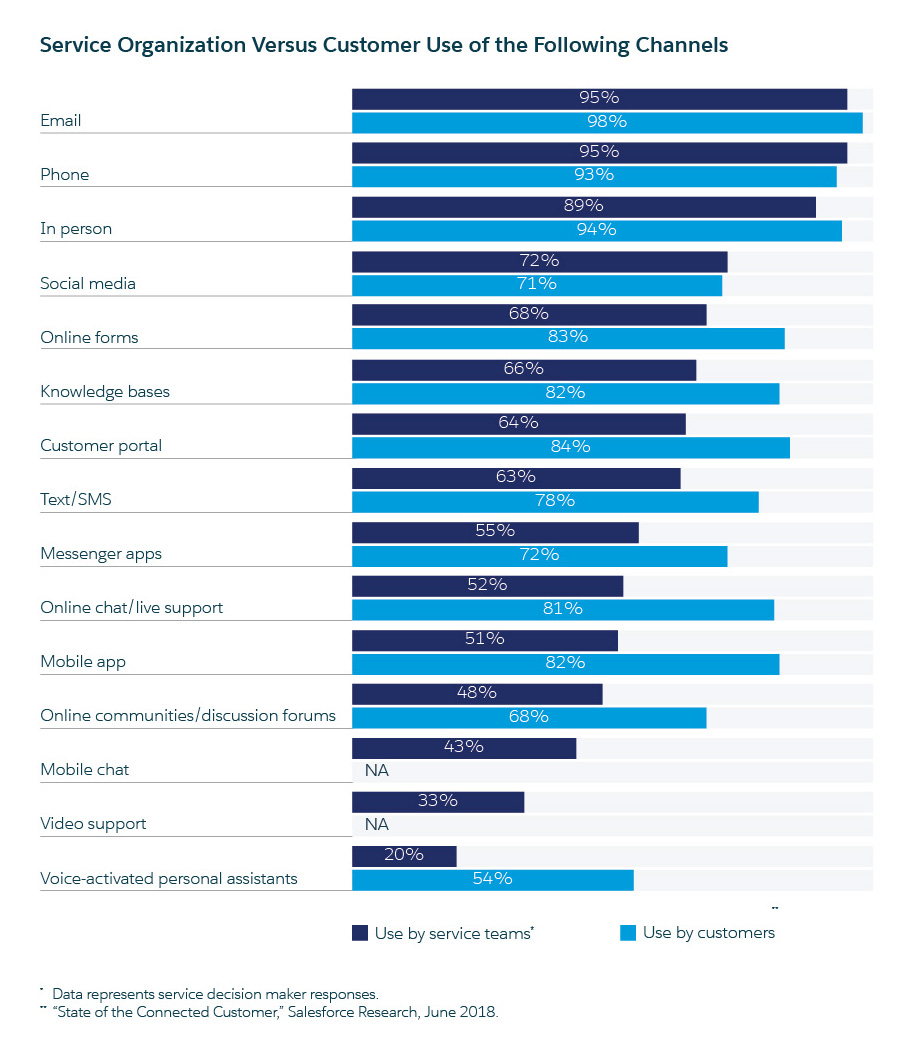
Planned implementation of digital service channels such as online communities, mobile apps, and mobile messaging platforms including WhatsApp and Facebook Messenger is high, but service teams are still largely behind the curve. Today’s customers are, on average, 16 percentage points more likely to use a given channel to communicate with companies than a company is to offer service on that channel. That means there’s a huge gap between what the customer wants and what organisations are delivering.
The gap is particularly wide when it comes to emerging service channels. Take voice-activated personal assistants like Siri and Alexa, for example – a 34 percentage point gap between customer and service team adoption – or mobile apps – a 31 percentage point gap. This is why only 48% of agents feel equipped to engage with customers on any channel they choose.
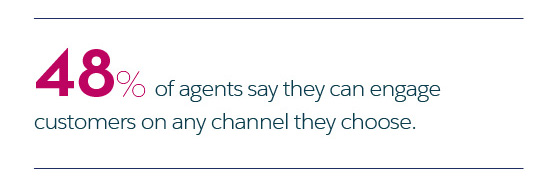
The fifth customer service trend that surfaced is that service hasn’t just gone digital, it’s also moved outside the confines of the office. Today, field service is a big initiative for service leaders across industries as they seek to bring customer experiences to a new level. But beyond making customers happy, field service is having a big impact on the top line. A whopping 80% of service leaders say field service drives significant revenue, and 79% say it drives new revenue streams.
Nearly 9 in ten (89%) service decision-makers say the experience a customer has with a mobile worker is a reflection of their brand, and 71% claim to be making significant investments in their mobile workforce – be it through technology, hiring or otherwise.
Yet much like the overall agent experience, the mobile worker experience is inconsistent across company performance tiers, with nearly twice as many mobile workers at underperforming organisations saying they have to toggle between multiple screens to get the information they need than those at high-performing organisations.
